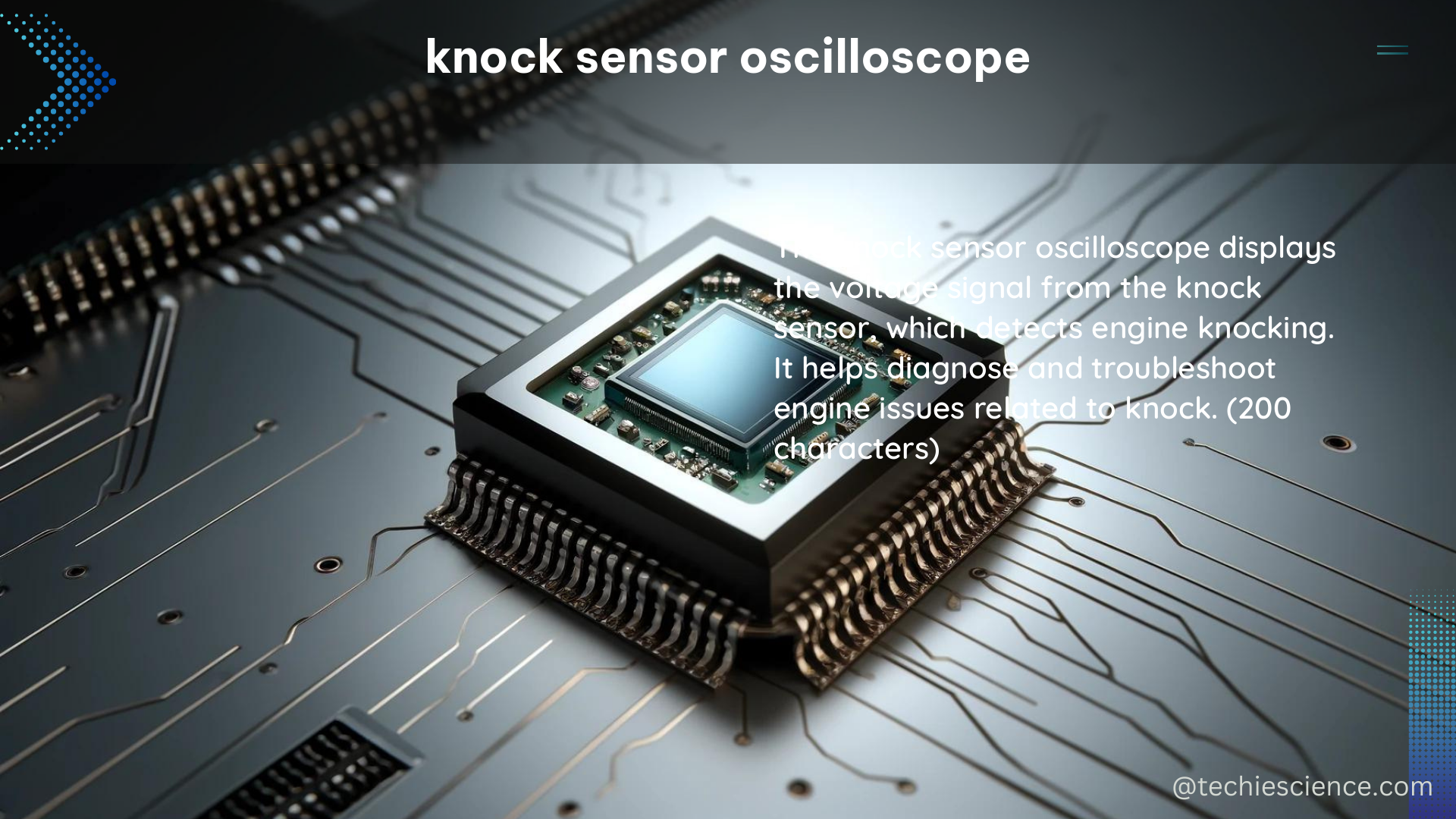A knock sensor is a critical component in modern internal combustion engines, responsible for detecting engine knock and providing feedback to the engine control unit (ECU) to optimize ignition timing and prevent engine damage. Measuring and analyzing the performance of a knock sensor requires a specialized oscilloscope, and this comprehensive guide will delve into the technical specifications and best practices for using a knock sensor oscilloscope.
Understanding Knock Sensor Operation
A knock sensor is a piezoelectric accelerometer that converts engine vibrations into an alternating current (AC) signal. When the crystal inside the sensor is subjected to vibrations, it generates a voltage proportional to the intensity of the vibration. This voltage signal is then used by the ECU to detect the presence of engine knock, which is a type of abnormal combustion that can lead to engine damage if left unchecked.
The frequency response of a knock sensor is a critical characteristic that determines its ability to detect engine knock. Resonant sensors are mechanically tuned to a narrow frequency range, while flat response sensors can detect a wider range of vibrations. The ECU can continuously monitor the sensor’s output to exercise precise control over ignition timing, necessitating the use of a built-in open circuit detection resistor for flat response sensors.
Measuring Knock Sensor Output

To test the operation of a knock sensor, you can use a multimeter set to AC volts or an oscilloscope with AC filtering turned off. The sensor has only two wires and is typically mounted on the engine block near the base of the cylinder head, making it relatively accessible for testing.
When testing the sensor, you can strike the area around it with a blunt chisel and hammer or run the engine and pull the fuse for the fuel pump to create lean conditions that might produce an engine knock. The sensor should produce a change of approximately 0.06V when struck, and you can also check the amount of resistance across the sensor and verify the value with the service information.
Using an oscilloscope can provide a more detailed picture of the sensor’s operation, even while the engine is running. Some engine management systems send out a brief bias voltage signal to check the condition of the circuit when the vehicle is started, and the ECU knows what types of voltage the knock sensor should produce during startup and idle.
Analyzing Knock Sensor Frequency Response
The frequency response of a knock sensor is a crucial characteristic to consider when testing its performance. To test the frequency response, you can use an impulse, such as tapping the sensor with a screwdriver handle, and look at the spectral output on the oscilloscope.
When measuring the frequency response, you can use the oscilloscope in single-shot mode and bang the sensor with different materials to see a change in frequency output. The sensor should produce a short “ringing” output when tapped, and the frequency of the ringing is the resonant frequency.
Technical Specifications of Knock Sensor Oscilloscope
When choosing a knock sensor oscilloscope, it is essential to consider the following technical specifications:
| Specification | Importance |
|---|---|
| Sampling Rate | A higher sampling rate allows for more accurate measurements of high-frequency signals. |
| Bandwidth | A higher bandwidth allows for the measurement of higher frequency signals. |
| Resolution | A higher resolution allows for more accurate measurements of small voltage changes. |
| Memory Depth | A larger memory depth allows for the capture of longer signals and the ability to analyze them in more detail. |
| Triggering | The triggering feature allows for the capture of specific events, such as the ignition of a cylinder. |
The specific requirements for each of these specifications will depend on the application and the characteristics of the knock sensor being tested. For example, if measuring high-frequency signals, a higher sampling rate and bandwidth are essential. If measuring small voltage changes, a higher resolution is necessary.
Conclusion
Measuring and analyzing the performance of a knock sensor is a critical task for automotive technicians and engineers. By understanding the operation of a knock sensor and the technical specifications of a knock sensor oscilloscope, you can effectively diagnose and troubleshoot engine knock issues, ensuring optimal engine performance and preventing costly engine damage.
References:
- Tomorrow’s Technician: Knock Sensor Diagnostics – https://www.tomorrowstechnician.com/knock-sensor-diagnostics/
- Pico Automotive: Knock Sensor – https://www.picoauto.com/library/automotive-guided-tests/knock-sensor
- EEVblog: Testing the frequency response of a knock sensor – https://www.eevblog.com/forum/beginners/testing-the-frequency-response-of-a-knock-sensor/

The lambdageeks.com Core SME Team is a group of experienced subject matter experts from diverse scientific and technical fields including Physics, Chemistry, Technology,Electronics & Electrical Engineering, Automotive, Mechanical Engineering. Our team collaborates to create high-quality, well-researched articles on a wide range of science and technology topics for the lambdageeks.com website.
All Our Senior SME are having more than 7 Years of experience in the respective fields . They are either Working Industry Professionals or assocaited With different Universities. Refer Our Authors Page to get to know About our Core SMEs.